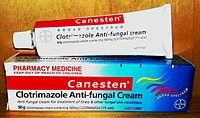
Photo from wikipedia
Monitoring fungal ecology and resistance to antifungal agents within intensive care units (ICU) is essential for the management of invasive fungal infections. Therefore, a retrospective descriptive study was carried in… Click to show full abstract
Monitoring fungal ecology and resistance to antifungal agents within intensive care units (ICU) is essential for the management of invasive fungal infections. Therefore, a retrospective descriptive study was carried in the ICU of Nimes University Hospital, France, from 2007 to 2016. As the majority of invasive fungal infections in ICU are caused by Candida species, the study objectives were to describe Candida species distribution, to assess candidaemia incidence and to monitor the antifungal drug susceptibility of Candida isolates and the consumption of antifungal agents. Among the recorded invasive Candida infections (n=244), 43% were intra‐abdominal and 22% bloodstream infections. Candida albicans was the most frequent species (55.8%), followed by Candida glabrata (14.1%), Candida tropicalis (10%), Candida parapsilosis (8%) and Candida krusei (5.3%). Candidaemia incidence was 4.49 per 1000 admissions. The mean consumption of antifungal agents was of 170.5 defined daily doses (DDD) for 1000 hospital days (HD) per year. Changes in antifungal drug consumption were observed, with an increased use of echinocandins (from 17.96 DDD/1000 HD in 2007 to 48.76 DDD/1000 HD in 2016), and the total treatment cost tripled during the study period. No significant change in fungal ecology or in the emergence of resistant species was observed; indeed, only 1.1% of isolates presented an unusual resistance to antifungal agents.
Journal Title: Mycoses
Year Published: 2017
Link to full text (if available)
Share on Social Media: Sign Up to like & get
recommendations!